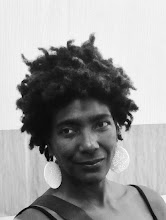There are currently less than 7% of films created by women making it to major film festivals —that is 7%, per year, worldwide. This percentage has remained low and static for 25 years. Film festival screenings constitute theatrical releases. Theatrical releases are required for film and/or television distribution.
Low access to film festivals limit women’s ability to earn livings behind the camera in their industry. The number of screen stories genuinely reflecting women’s experiences is also disproportionately diminished. Omission of the perspective of women in film complicates matters in the purview of bioethics: beneficence, autonomy and justice.
23 percent of people surveyed consider entertainment television as the top three sources of their health information. That health information is being controlled through a male perspective as shots are usually called by male producers, directors and writers. It is a bioethical tenant that equality does not equal sameness. This was learned when in 1993, the US federal government mandated women and racial minorities be included in drug research. Clinical observation showed women and minorities were being harmed by lack of inclusion as women’s responses to pain and pain medications were significantly different from those of men. These new observations coincided with increasing the critical mass of women and peoples of color in the medical profession. Women in film seems to represent a parallel situation.
Women filmmakers are denied the opportunities to reflect functional abdominal pain, menopause, postpartum depression, caregiver burnout, forced sterilization. We are not seeing these stories; yet women struggle to comprehend their meanings in gyms, carpools and walks on dirt roads to schools around the world.
What is to be done? The 38th Mill Valley Film Festival (MVFF) in October 2015, piloted its “Mind the Gap” programming. This is a conscious efforts to seek and evaluate more films by women. The “Mind the Gap” goal is to change the disproportionately low numbers of films in major festivals, representing women working behind the camera, —directors, writers, cinematographers and producers. However, it is also an attempt to participate in a dialog about the origin of the problem. Mind the Gap includes a commitment to search for those films which do manage to be made by women, despite nearly insurmountable barriers. The hope is to help establish models which can be replicated to improve women filmmakers access to the industry.
The MVFF is among the oldest and most respected USA film festivals. It is juried through the coveted Audience Awards, bestowed by a historically film savvy 60,000 MVFF patrons. In 2015, some 170 films were screened. Programmers of the MVFF are legendary for their curatorial capacity. Many of the independent, international, documentary, short and feature films seen at this festival are U.S, North American or World Premieres. MVFF’s influence derives from consistently programming and hosting major award winners well before the beginning of the award nomination season.
In the October 2015 MVFF, roughly thirty-three percent of films screened were developed by women behind the camera. That is a better female to male ratio than most top tier film festivals: compare Toronto, Cannes, Berlin, Sundance. However, the California Film Institute, the parent organization sponsoring the MVFF, has even higher aspirations. The CFI-MVFF goal is a fifty-fifty, female to male film director ratio, a far cry from the current international paltry 7% representation of women’s films in festivals.
Among the 2015 MVFF premieres, with significant women’s content and as it happens also other forms of diversity, which you may not find in the Oscar lineup, were: Under the Same Sun (dir. Mitra Sen), A LIGHT BENEATH THEIR FEET (dir. Valerie Weiss), INTERWOVEN (dir.V.W. Scheich), and THE ASSASSIN (dir.You Hsiao-Hsien.)
Read:
Smith, S., Pieper, K. et al, Gender & Short Films: Emerging Female Filmmakers and the Barriers Surrounding Their Careers examining short films and directors. http://annenberg.usc.edu/pages/~/media/MDSCI/MDSC%20LUNAFEST%20Report%2010515.ashx, accessed February 1, 2016.
Smith, Stacy L., Choueiti, M. et al. Inequality in 700 Popular Films: Examining Portrayals of Gender, Race,
& LGBT Status from 2007 to 2014. http://annenberg.usc.edu/pages/~/media/MDSCI/Inequality%20in%20700%20Popular%20Films%2081415.ashx
accessed February 1, 2016
MVFF Mind the Gap http://www.mvff.com/mind-the-gap/ accessed February 1, 2016.
How Healthy is Primetime Television…http://kff.org/other/report/how-healthy-is-prime-time-an-analysis-of-health-content-in-popular-prime-time-television-programs/ Accessed February 1, 2016.
NIH Guidelines on the Inclusion of Women and Minorities as Subjects in Clinical Research US Public Health Service http://archive.hhs.gov/ohrp/humansubjects/guidance/59fr14508.htm Accessed Feb 1, 2016
Cross Reference:
http://www.bioethicsscreenreflections.com/2015/10/under-same-sun-peace-and-bioethics.html , accessed February 1, 2016
http://www.bioethicsscreenreflections.com/2015/10/a-light-beneath-their-feet-bridges.html
http://www.bioethicsscreenreflections.com/2015/10/the-assassin-and-bioethics-death-and.html

0 comments:
Post a Comment